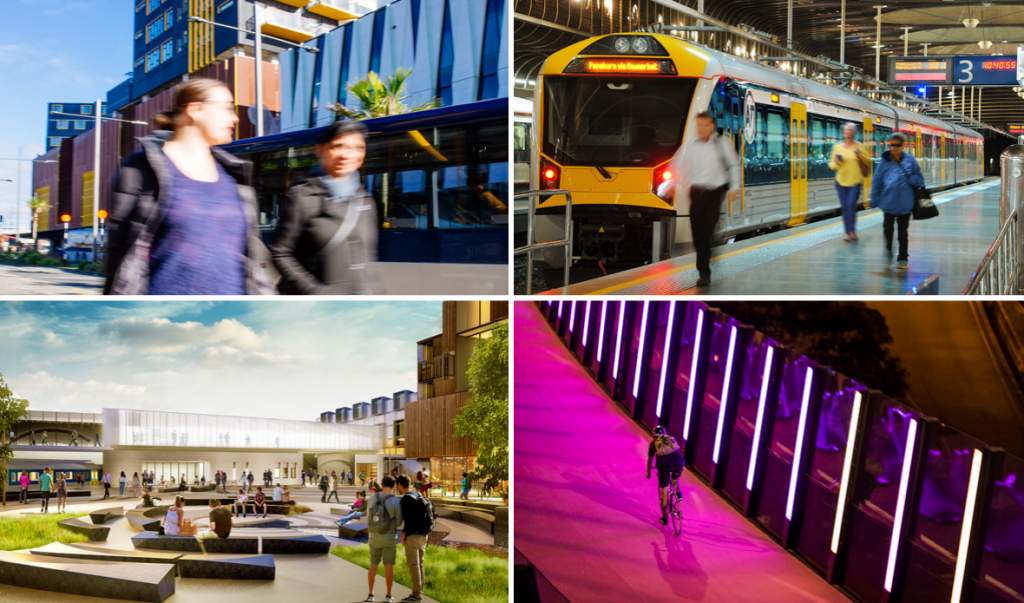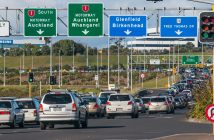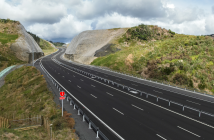The joint government and Auckland Council decision to pour nearly $30 billion into Auckland transport over the next 10 years has been generally welcomed by various key sectors

Partly funded by a fuel tax, private finance and tolls, the Auckland Transport Alignment Project (ATAP) is being billed as New Zealand’s largest ever civil construction programme.
Some $28 billion will be poured into light rail and roading projects, while heavy rail and bus upgrades, safety improvements and more dedicated cycle lanes are also on the drawing board.
The projects will be funded by $4.4 billion raised from the new Auckland fuel tax, increased revenue the National Land Transport Fund and Crown Infrastructure Partners contributions.
The funding plan also includes public-private partnerships (PPPs).
“We’re putting half a billion dollars into Mill Road, which is going to take a lot of pressure off the Southern Motorway between Manukau and Drury, and $200 million into Penlink, which we’re intending to do as a PPP,” Transport Minister Phil Twyford explains.
However, Infrastructure New Zealand CEO Stephen Selwood says while the announcement is “very welcome” more needs to be done.
“To reduce congestion beyond today’s levels, road pricing and improved alignment of housing and employment with transport is required,” he maintains.
Selwood says the application of private capital to fund and finance transport projects is enabling the government’s investment.
“Debt financing the upfront costs of projects like light rail, Penlink and Mill Rd and paying back public or private debt via tolls and development contributions is a much fairer and more efficient way to grow.
“It is pleasing to see the government has recognised that pay-as-you-go funding for major investment does not provide the flexibility to invest in city-shaping infrastructure and cannot undo 30 years of underinvestment in our largest and fastest growing city.”
Selwood says the commitment to Mill Rd and Penlink is “especially welcome”, particularly if those projects can be brought to market this year.
“A big gap in the pipeline has emerged, and if contractors cannot see work coming through in the immediate term then they will have to shed skilled and productive staff right at the same time as Australia is looking for labour.”
However, while the programme is expected to see a major improvement in public transport investment and patronage, Selwood believes “it is clear” that much more is required if promises to relieve congestion are to be met.
“Under the programme, congestion on Auckland’s roads will remain at today’s levels indefinitely,” he predicts.
“Aucklanders who spend 100 hours stuck in gridlock each year will still spend 100 hours in gridlock in ten years, unless they are lucky – or wealthy – enough to live alongside a priority public transport route.
“Experience in Portland and other cities in the USA suggests that the better off will move into these corridors to avoid traffic congestion, pushing lower income groups into less accessible neighbourhoods and exacerbating the wealth divide.”
Public transport users and the wider public will be pleased to see an expansion of bus and rail services, he notes.
“Supporting that shift will be an $8.4 billion investment in rapid transit.
“This is almost double the amount invested in road projects, even though the total programme will be overwhelmingly enabled and funded by road users via fuel tax increases.”
Ultimately, Selwood says three major policy shifts are required to improve congestion for all users, including for the 90% of total transport demand which take place on roads.
“First, underinvestment in capacity to meet foreseeable demand must stop.
“A fourth main trunk rail line will be required in the future, as will four lanes on the Penlink corridor and the extension of the Mill Rd corridor.
“These investments open up land for housing, have positive economic benefits and should be front-footed, not reacted to when capacity is exhausted.”
Second, he says, there must be a move to road pricing.
“Vehicle charges which reflect the cost of transport infrastructure and the scarcity of road space, and which sees these funds reinjected back into the system to benefit users, has been shown to materially reduce congestion.
Third, Selwood argues, the sequencing of growth projects like light rail and Mill Rd have to be coordinated with Auckland Council infrastructure and planning to “better align” new employment and housing with transport.
“It is the disjoint between where Auckland’s rapid growth has been allocated and where transport investment is going, which is the driving force behind weak transport outcomes.
“The steps forward announced are very positive, but will not alone meet the expectations of Aucklanders for a city which is easy to get around,” Selwood says.
Contractor concerns
Selwood’s views were supported by Civil Contractors New Zealand (CCNZ), which welcomed the ATAP announcement but raised concerns over the significant reduction in infrastructure construction work over the next two years as the industry transitions from state highway construction to large public transport projects.
“Of course we are pleased to see such ambitious public transport infrastructure targets but attention needs to be given to ensure a smooth pipeline of work between now and the start of these projects,” CCNZ CEO Peter Silcock says.
Co-funding, financing, engineering and design, and consenting new projects all took considerable time to develop and approve.
Normal timeframes would dictate that new work would not get underway until 2020/21.
However, the fast tracking of a few roading projects such as the Mill Road corridor and the widening of SH1 south of Parakura would help ease the transition process, Silcock says.
A strong work pipeline avoided a boom and bust cycle and enabled industry to manage peaks and troughs, he observes.
It also enabled different clients to phase work and helped ensure construction companies invested in plants, people and systems, and workers had sustainable employment and received training and development.
“What we don’t want to see is a big dip in workload alongside the current huge demand across the Tasman.
“If that occurs we could lose precious resource, talent and experience to Australia.”
Plans to accelerate the building of the “Penlink” and Mill Rd roading projects were also welcomed by the National Road Carriers Association (NRC), the nation’s leading road transport organisation.
Work on both projects – an alternate link to the Whangaparoa Peninsula from state highway one and a major link from Flat Bush to Drury to take pressure off the southern motorway – was originally only scheduled to get under way in 2030.
“It’s great news they have been brought forward to the first 10-year plan of the Auckland Transport Alignment Project (ATAP), says David Aitken, NRC’s CEO.
“But now we need to get on with it,” he adds.
“There has been some detail on the projects being done in stages, with planning for future-proofing.”
Aitken says the projects need to be future proofed now.
“By the time Penlink is built the two lanes won’t be adequate, so they might as well build the four lanes straight away.”
Puhinui Rd, the southern link to the airport, is also listed for an upgrade from its current two-lane operation.
All are designed to ease Auckland’s congestion problems and cater for the needs of a growing population.
Aitken says he was still looking for details on the revised lower cost plan for the East West link between Sylvia Park and Onehunga.
“It is the key piece of infrastructure for greater Auckland and easing the congestion problem.”
He says the NRC could not envisage the East – West link working on a different route from that which has already received Environment Court approval.
It is designed to take pressure away from Onehunga and the Church St – Nielsen St corridor, which carries over 6,000 heavy freight vehicles a day as well as other traffic.
Rail role
The announcement of a new Auckland Transport Alignment Programme (ATAP) with a boosted role for rail is a significant step forward for the region, KiwiRail Chief Executive Peter Reidy says.
“Auckland commuters and freight movers will benefit from the increased and earlier investment in the North Island Main Trunk rail line through Auckland, with the Third Main additional freight line earmarked for investment and the electrification of the network to Pukekohe,” he believes.
“This will allow for greater numbers of commuter and freight trains on the network as the City Rail Link project comes to fruition and as demand for regional passenger trains grows.”
Equally important in Reidy’s eyes is the recognition of safety issues in Auckland with more frequent trains.
“Additional funding has been planned for grade separation at crossings which will create greater distance between cars, pedestrians and trains.
“Safety and keeping traffic moving around the city post-CRL is a big consideration in the years ahead.”
Reidy says ATAP 2018 sets a longer-term vision for rail in Auckland which will help the city grow sustainably and efficiently.
“It is a recognition of the role rail plays in moving people and goods quickly around our biggest city with less congestion and better environmental outcomes.
“Every tonne of freight moved by rail, for example, is a 66% carbon emissions saving over heavy road freight.”
He notes that KiwiRail works closely with AT, enabling more than 20 million commuter trips on our network each year and in the development of CRL which will transform the city.
“Keeping trucks off our roads at peak times and moving freight sustainably in and out of ports is a key role for KiwiRail.
“We are also working closely with the government, MOT and Waikato Regional Council on the viability of a commuter service between Hamilton and Auckland.
Major ATAP investments include:
- Committed projects like the City Rail Link and northern motorway improvements
- Light rail
- Eastern busway (Panmure-Botany)
- Airport-Puhinui State highway upgrade, including a high quality public transport link to an upgraded Puhinui rail station
- A bus priority programme to more rapidly grow Auckland’s bus lane network and support faster, more reliable and more efficient bus services
- Albany-Silverdale bus improvements
- Lower-cost East West Link to address key freight issues in the area
- Papakura-Drury motorway widening
- First phase of the Mill Road corridor
- Penlink (tolled)
- Walking and cycling programme to expand the network and complete key connections (e.g. SkyPath)
- Significant programme of safety improvements
- New transport infrastructure to enable greenfield growth
- Network optimisation and technology programme to make the best use of the existing network
- Rail network improvements including electrification to Pukekohe, additional trains and other track upgrades.




